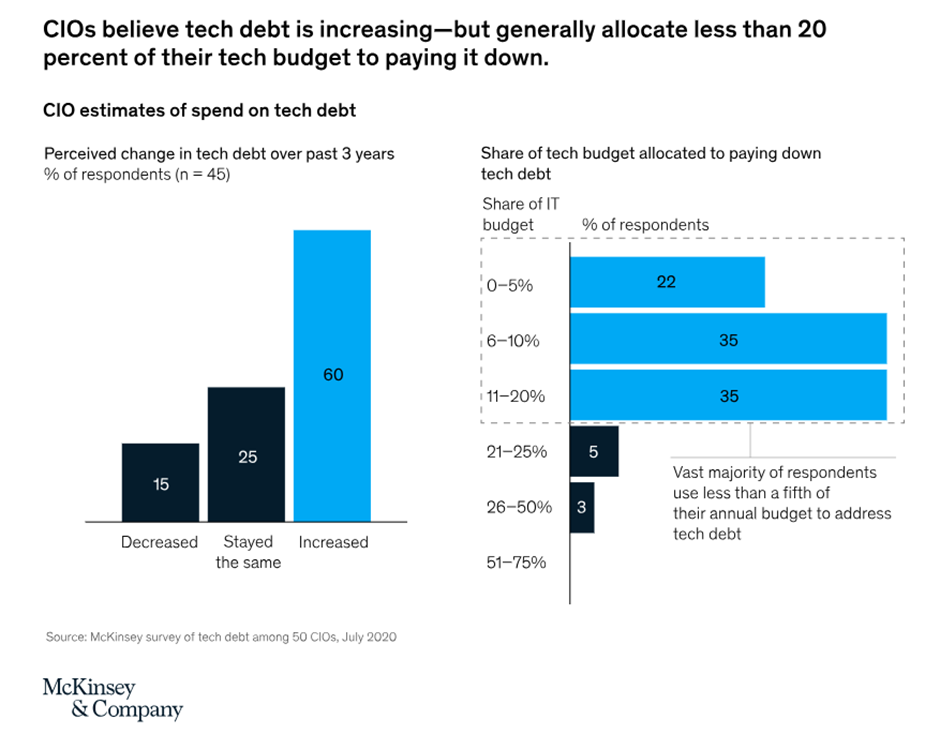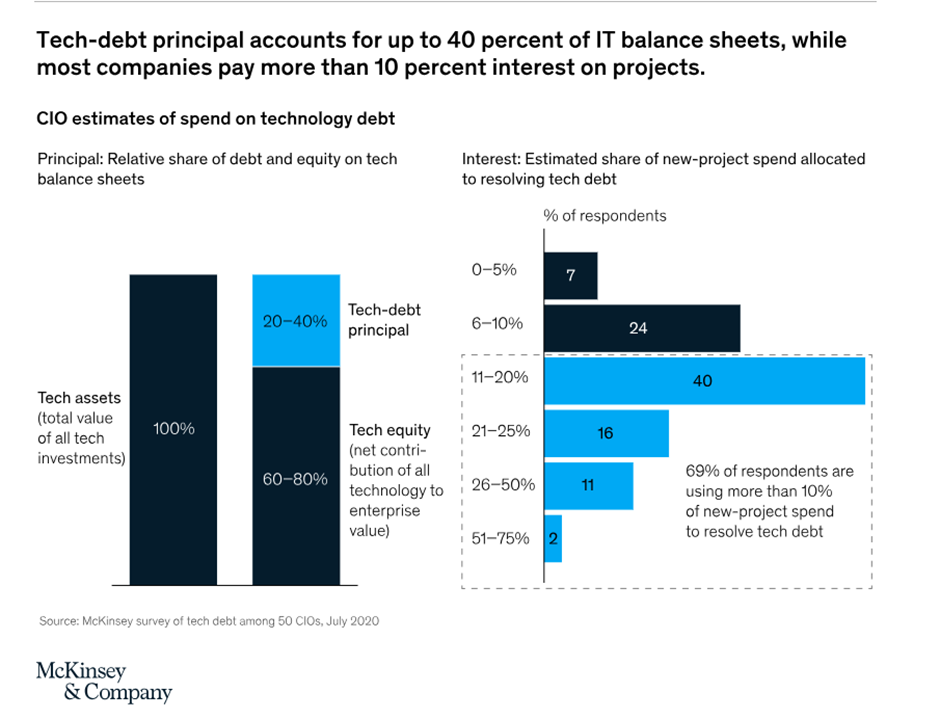Contents
Introduction
In software development, ‘technical debt’ arises from choosing a quick solution over a proper one to meet the deadlines, causing increased complexity, challenging maintenance, and decreased effectiveness in future. Addressing technical debt is essential for a healthy, lasting software ecosystem. As we already had a series of blogs on explaining technical debt in a comprehensive way and also how legacy modernization can tackle technical debt, Now let us see how the economic impact of technical debt hinders our revenue.
Economic Impact of Technical Debt
Financial aspects in the context of technical debt pertain to the economic consequences, encompassing increased maintenance costs, reduced productivity, and potential revenue loss due to system inefficiencies. Balancing immediate development speed with long-term financial implications is crucial, necessitating strategic decision-making to minimize the overall economic impact of technical debt in software development projects. It incurs extra resources, extends development cycles, lowers productivity, and hampers innovation, raising maintainability costs.
How do they relate to the underlying software engineering concepts?
As code complexity increases, addressing issues becomes more time-consuming and costly. Delaying bug fixes and updates impacts maintenance, hindering software projects and overall financial health. Technical debt, seen in the necessary reworking or redesigning of code and re-deployments, adds to budget challenges. Reworking complicates system maintenance, making it challenging and resource-intensive. These issues highlight the close link between software engineering concepts and the economic impact of technical debt on project development and financial sustainability.
Interesting calculation from @Stripe on the economic impact of developer productivity.
— Matt Rickard (@mattrickard) May 12, 2021
There's an interesting negative flywheel effect as well -
bad code leads to technical debt
technical debt leads to bugs
and bugs lead to debugging time pic.twitter.com/k3WMrMYExi
Recurring Costs
Fixing problems gets more expensive and time-consuming as the codebase grows more complicated. Postponing feature and bug patches increases maintenance costs. Extended development duration could result in recurring costs. Moreover, the requirement for thorough reworking or total system redesigns emerges, adding to the fiscal burden. Technical debt is a detrimental economic impact that is highlighted by the re-costs incurred by businesses. These re-costs arise from resource allocations made necessary to address preventable challenges that inhibit software project progress and overall financial progress that leads to economic impact of technical debt.
Hiring Costs
Economic Impact of Technical debt increases the cost of hiring new employees. developers spend more time troubleshooting and fixing issues, diverting resources from value-adding tasks. This lengthens hiring cycles and raises the need for qualified developers, which raises hiring costs. Further driving up labor expenses is the requirement for specialized knowledge in traversing intricate, indebted codebases. Team productivity is strained by ineffective procedures brought on by technical debt, which impairs an organization’s capacity to fulfill deadlines and provide high-quality output. It becomes imperative to pay off technical debt in order to maximize human resources and lessen these financial difficulties.
Long Term Costs
The economic impact of technical debt is substantial, which is mostly shown in long-term expenses. Higher maintenance costs are a result of accruing technological debt. Project timeframes get longer as a result of developers having to spend more time finding and addressing problems when code quality declines. It also inhibits creativity and flexibility, making it more difficult for a system to quickly adjust to changing needs. Missed business opportunities and a decline in competitiveness may arise from this. Furthermore, resources are consumed by the ongoing requirement for updates and fixes, which takes capital away from key objectives. In the end, technical debt can limit a company’s growth and profitability due to its compounding impacts, which emphasizes the significance of proactive debt management.

Source: McKinsey&Company
Opportunity Costs
Technical debt imposes substantial opportunity costs by diverting resources from valuable initiatives. When developers prioritize quick solutions over optimal ones, the resulting debt accumulates interest in terms of increased future development effort. This deferred investment impacts the ability to capitalize on market opportunities promptly. The longer technical debt persists, the higher the opportunity costs, as resources that could enhance innovation or enter new markets are tied up in maintenance. Over time, the delayed response to evolving market needs may lead to an economic impact of technical debt from missed opportunities and decreased competitiveness.
Balance Sheets
The economic impact of technical debt can greatly impact on balance sheets as it increases long-term liabilities. Deferred technical concerns become a rising financial obligation as their cost increases. This additional burden may have a negative impact on financial ratios and the state of the economy generally, which could erode investor confidence and credit worthiness. Furthermore, capitalizing on continuing maintenance costs can raise operating costs and reduce profitability. Companies must manage and minimize technical debt, guaranteeing long-term financial transparency and stability, in order to keep a healthy balance sheet and draw in investors.

Conclusion
As we have briefly explained the economic impact of technical debt, it is imperative to tackle it to chase our finances effectively. At Sparity, our developers can deliver projects with proper code on time without deploying quick shortcuts, saving you from future costs. It’s not the output, but the quality of code that developers write that is paramount, and Sparity specializes in that. We can even maintain and support you if your systems are under the above conditions.




